How to choose a dishwasher according to parameters?
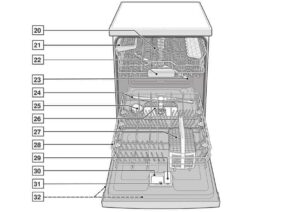 In fact, choosing a dishwasher turns out to be more difficult than expected. Particularly picky buyers stretch out the search for a new “home assistant” for months, looking for the ideal option that meets all their requirements. It is especially difficult for those who are purchasing such equipment for the first time to decide.
In fact, choosing a dishwasher turns out to be more difficult than expected. Particularly picky buyers stretch out the search for a new “home assistant” for months, looking for the ideal option that meets all their requirements. It is especially difficult for those who are purchasing such equipment for the first time to decide.
It is recommended to select a dishwasher based on its parameters. That is, first you need to think about what criteria are more significant for you: color, cost, size, capacity, etc. Let’s figure out what technical characteristics you should definitely pay attention to.
Appearance
When you decide to choose a new dishwasher based on its characteristics, decide which indicators will be decisive for you. Most often, the most important factors for buyers are the cost of the machine, its functional “filling” and size. Some look at resource consumption, display availability and maintainability.
Typically, the design of dishwashers in the same price segment is approximately the same. In addition, the doors of built-in machines are equipped with special fasteners for hanging the facade. That is, the body is often hidden in furniture. Therefore, few buyers pay attention to the appearance of the device.
If you are purchasing a freestanding dishwasher, appearance will be important. Typically, buyers opt for white equipment, which fits into almost any interior. If your kitchen is designed in a strict black color, then it is quite possible to choose a dark PMM - there is a large assortment in household appliances stores.
Case dimensions
When choosing a “home assistant”, much attention is paid to its size. There are narrow dishwashers on sale, 45-50 cm wide, and full-size machines (60 cm). The height is usually 85 cm and can be adjusted using the legs. This is very convenient if you need to place the device exactly under the tabletop. The body depth of standard models is 60 cm.
The main difference between a narrow and a standard dishwasher is the number of sets of dishes that can be loaded at a time.
Typically, no more than 9-10 sets can be loaded into a narrow dishwasher at a time. If we talk about machines with a width of 60 cm, then up to 17 sets of dishes can fit there. Therefore, if the family is large, it is better to opt for full-size equipment.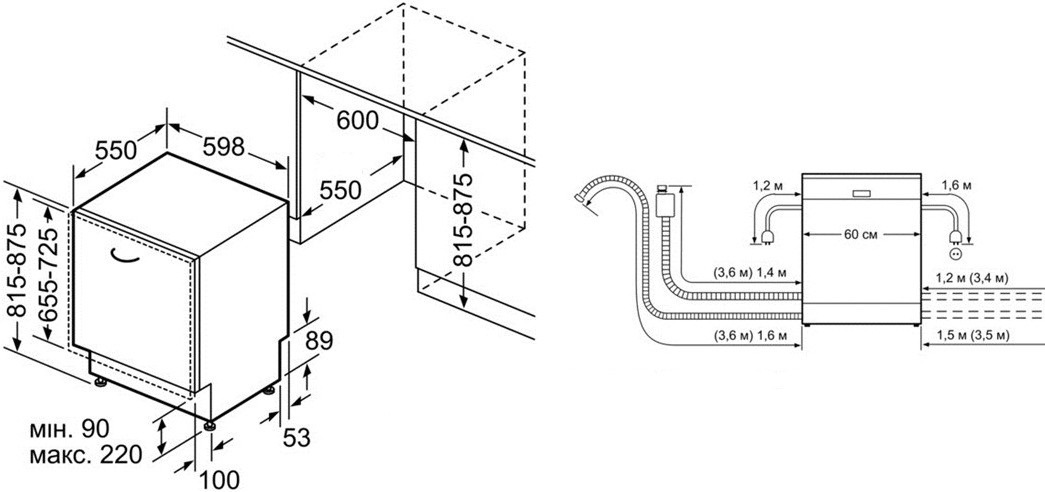
When the kitchen is small, you can pay attention to compact dishwashers. They are also built-in and stationary. The height of such machines is approximately 45 cm, which makes it possible to place them even in a small room. Due to their small size, they can accommodate no more than 5 sets of dishes.
The choice of a built-in or stationary machine is a matter of taste for each buyer. Think about how you see your kitchen. Is it acceptable for the device to be in plain sight, or do you want to hide the “home assistant” in one of the cabinets?
As for the capacity of the dishwasher, you need to focus on the needs of your family. If there are 5 people, then a narrow machine is not enough - it is better to buy a full-size unit that allows you to wash up to 16 sets of dishes at a time. When a working married couple plans to use the device, the device will be enough for 7-8 sets.
Size of baskets and washing chamber
The description of any dishwasher always contains information about how many appliances it is designed for.This parameter tells you how many cutlery can be loaded into the chamber at a time. Today on the market there are machines that can hold from 4 to 16-17 sets of dishes at a time.
What do manufacturers mean by the concept of one set of cookware? This is a 7-piece kitchen utensil set. Namely: three plates (for soup, main course and salad), spoon, fork, mug and saucer for bread.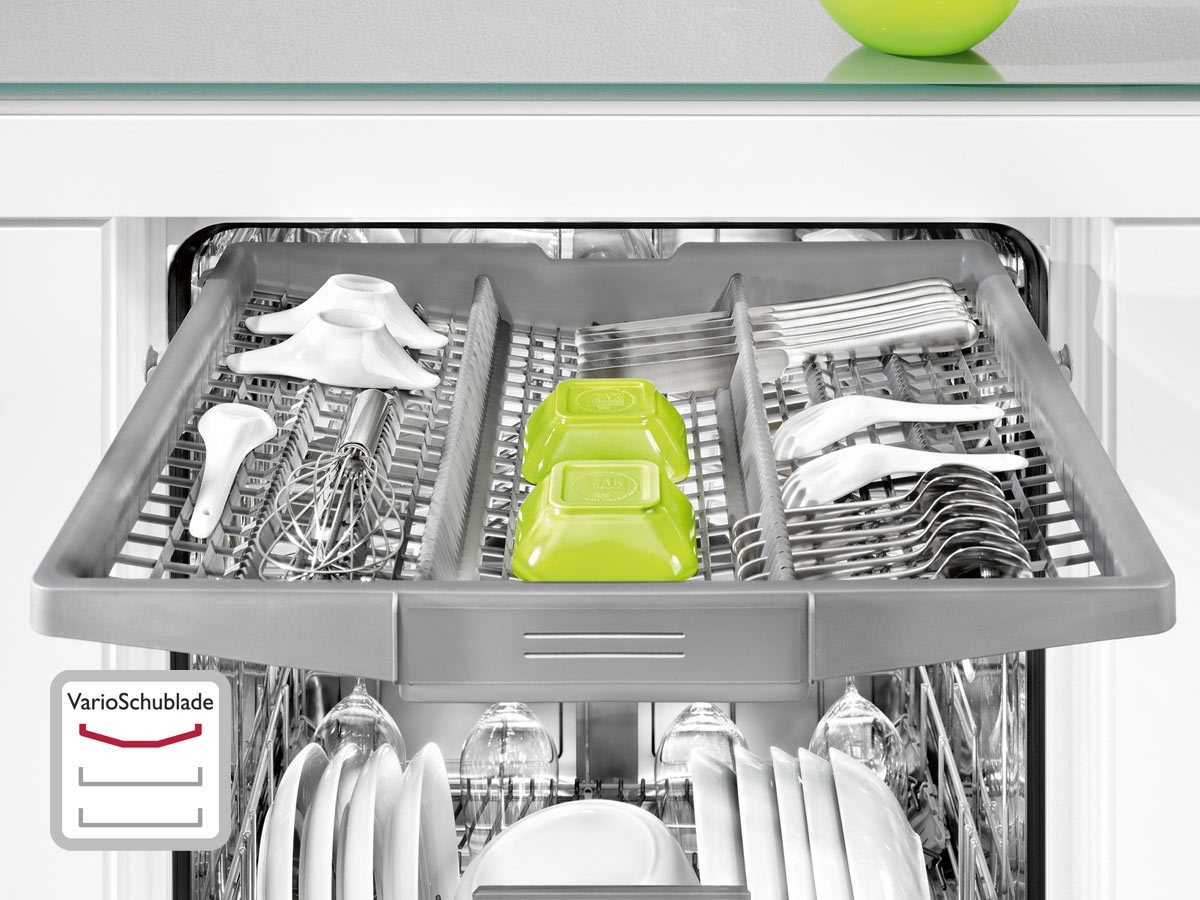
This indicator is convenient for comparing different models of dishwashers. It makes it possible to understand which machine has a more spacious working chamber. However, the information about the number of sets is quite far from reality, since the device also includes pans and pots, and the manufacturer does not take this into account.
Compact dishwashers have the simplest design. They only have one basket for dishes. It can accommodate additional containers for spoons, forks and knives.
Dishwashers of standard height (about 85 cm) may have one of the following “fillings”:
- classical. It assumes the presence of two pull-out baskets: a lower one for large utensils and an upper one for smaller utensils. There is a separate tray for forks and spoons installed in the lower part;
- modern. Here we are talking about three baskets: the bottom (for pots, pans, stewpans), the middle (for plates, mugs) and the top (a retractable tray for spoons, forks, knives).
Think about which option would be convenient for you specifically. With the classic layout, spoons, knives and forks are placed vertically in the basket; with the modern layout, they are placed horizontally in the tray.
Filter types and media recognition
Every dishwasher has a filter located in the middle of the base of the cooking chamber. It collects leftover food, fat and small debris. About once every 2 months, the mesh must be removed and cleaned, otherwise the water circulation in the system will be disrupted.
If you do not want to periodically clean the filter, you should pay attention to dishwashers with a self-cleaning element. This mesh does not require manual washing. The machine will do everything automatically.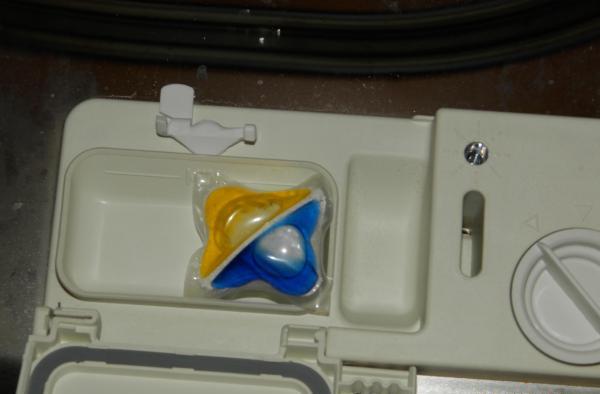
Basic products used by dishwasher users:
- salt;
- rinse aid;
- dishwashing detergent (powders, tablets, capsules, gels);
- compositions for cleaning the machine itself (for antibacterial treatment, prevention of scale formation, etc.).
It is advisable to buy dishwashers that can recognize all types of detergents.
Any dishwasher can recognize salt, rinse aid and powder. If you plan to use tablets or capsules, look for models with a special compartment. Cheap machines may not be configured to work with compressed products.
Salt is a must if you have hard tap water in your area. This is easy to check if you use unfiltered tap water to boil. Open the lid and look inside the kettle - traces of scale present on the bottom and walls will indicate an excessive level of hardness.
There is an arrow on the cap of the salt reservoir. With its help, you can regulate how much product to put into the machine. If the water is very hard, it is better to set the maximum volume. If moderate, the pointer moves to the middle.
Some dishwashers can automatically calculate the hardness of the water and, based on this, measure the right amount of salt. These are usually premium smart models, and they are not cheap.
Resource consumption
Be sure to pay attention to the energy efficiency class of the machine and how much water it uses in one cycle. These indicators will tell you how economical the dishwasher is. It is advisable to choose models with energy consumption classes from “A+” to “A+++”. Such machines will “eat up” significantly less kilowatts.
In the description of the dishwasher, the manufacturer indicates both the energy efficiency class and the actual consumption of kilowatts per operating cycle. Even at the stage of selecting equipment, you can calculate how much electricity the device will consume monthly and choose the option that suits you most.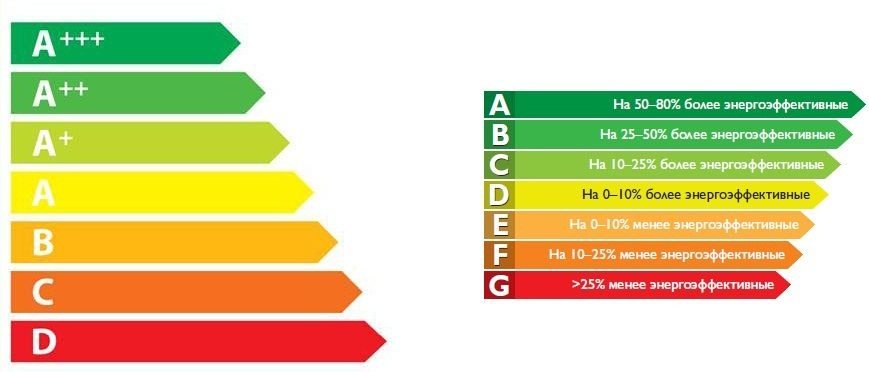
Also, during the tests, the actual water consumption per wash is determined for the machine. Economical models consume no more than 15 liters. Standard dishwashers use an average of 20 liters of water, but this is more economical than washing dishes by hand.
The stores offer dishwashers that can be connected additionally to hot water. Such machines provide less energy consumption, since warm water is used immediately for washing. However, many users note that the quality of cleaning dishes in this case is worse.
User interaction
Any dishwasher is controlled using a set of buttons presented on the dashboard. They can be mechanical or sensory. Also, some models are equipped with a display where all information about the stages of the cycle is displayed.
Of course, dishwashers with a display are more convenient to use.The screen shows the minutes until the end of the program, and a fault code is displayed in the event of a breakdown. However, such models are more expensive than their counterparts without a digital display.
Dishwashers without a display have various indicators on the control panel. Each LED corresponds to a certain operating mode of the device. When the machine detects a malfunction in the system, it also notifies the user about it, but by flashing certain lights.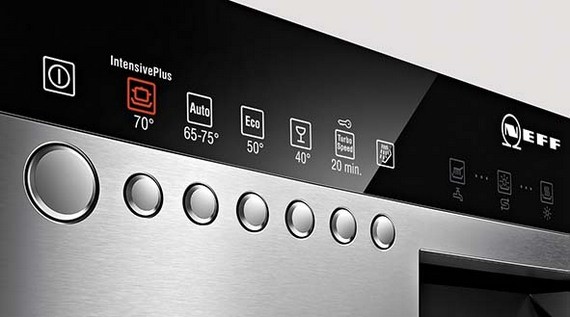
There are salt and rinse aid indicators on the dashboard. This makes it convenient to control the filling of the container and add products to it if necessary.
Many modern dishwashers have an indicator projected onto the floor. For built-in models, this is a light beam. It makes it possible, without opening the door, to understand whether the machine has finished working or not. The strip glows while the cycle is running, and then goes out or changes color.
More advanced dishwashers even project the time remaining until the end of the program onto the floor.
Please note whether the working chamber has internal lighting. It is more convenient to load dishes when the hopper is illuminated from the inside. But this is just an additional option that makes using the device a little more comfortable.
A set of basic and additional modes
For many buyers, it is very important which programs are stored in the dishwasher’s memory. Often this factor determines the choice in favor of a particular model. On the other hand, usually, even with a variety of modes, housewives run 2-3 main algorithms (fast, standard or intensive washing), without using all the capabilities of the equipment.
Let's figure out what programs can be provided in a modern dishwasher.
- Auto mode.The equipment itself determines the optimal cycle settings, washing the cutlery until it deems them clean. Such machines are equipped with a water transparency sensor.
- Bio mode. A program created for washing with special products that contain bio-additives.
- Express wash. An algorithm designed for processing lightly soiled dishes.
- Intensive mode. A program designed for heavily soiled dishes. The water is heated to the highest possible degree. Ideal for washing pots, baking trays, frying pans, and “dried” plates.
- Delicate program. Ideal for processing fragile dishes, such as glasses, crystal. Suitable for washing cutlery that does not withstand high temperatures.
- Economy mode. Suitable for washing dishes with medium intensity of soiling. The water is heated to 50-55°C, which ensures reduced energy consumption (by 20-25%).
- Rinse. This mode is needed to lightly spray the dishes placed in the chamber with water. This action may be necessary if you plan to start the cycle later, but are afraid that the cutlery will “sour” during this time.
Some machines have a "half load" program. It should be started when the working chamber is half empty. This will avoid waste of water and kilowatts.
A useful feature is the delayed start timer. This option is available on most modern dishwashers. With its help you can set the start time of the cycle. For example, load the machine before bed and set it to start after 3-4 hours. The delay is especially convenient if the apartment has two-tariff meters. It is advisable to opt for dishwashers with full protection against leaks; such models have not only a water level sensor in the pan, but also a special inlet hose that quickly responds to a leak.
More expensive models are equipped with a water purity sensor. Such machines can independently determine cycle settings, focusing on the degree of soiling of the dishes. When choosing, you should also pay attention to the noise level emitted by the equipment during operation.
Thus, in the process of choosing a new dishwasher, you should pay attention not only to the cost and capacity, but also to the manufacturer, the set of basic programs and special functions, efficiency, and maintainability of the equipment. It would be a good idea to read customer reviews. This will help you choose the perfect dishwasher.
Interesting:
Reader comments
- Share your opinion - leave a comment
Categories
Washing machine repair


For buyers

For users

Dishwasher





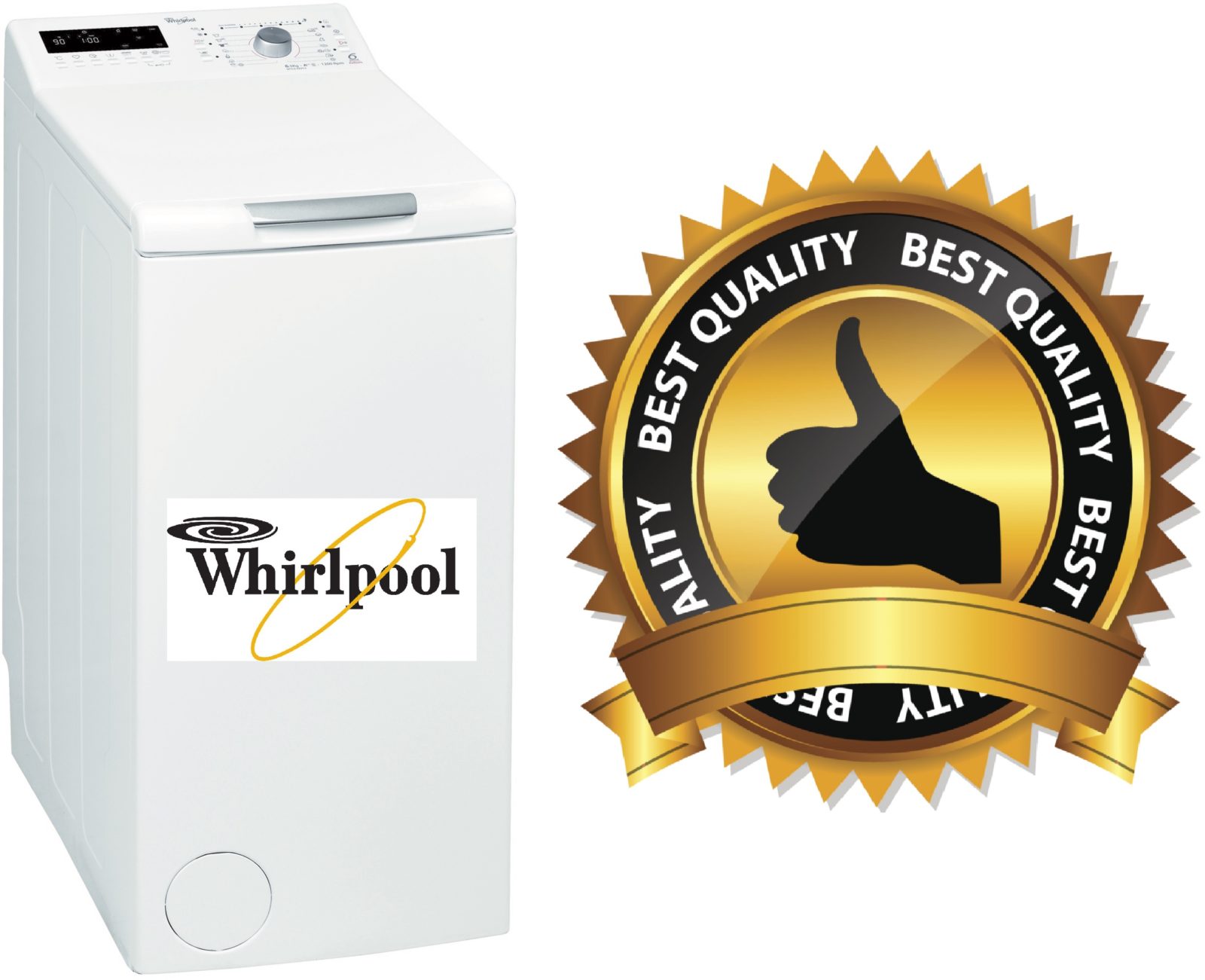











Add a comment